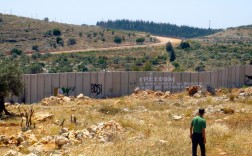-
Settlers and Israeli forces suppress second joint Friday protest in Silwad and Deir Jarir villages
3th May 2013 | International Solidarity Movement, Ramallah, Occupied Palestine By Team Nablus Around four hundred Palestinians, joined by a handful of international activists, participated in today’s weekly demonstration organised by Silwad and Deir Jarir villages on their lands, upon which settlers from Ofra set up an illegal outpost more than four weeks ago. Today, […]
-
Revisiting Ni’lin after four years
2nd May 2013 | International Solidarity Movement, Ni’lin, Occupied Palestine By Team Nablus It’s been four years since I had visited and lived in Ni’lin and the decision to visit on Friday filled me simultaneously with excitement and longing but also dread. Four years ago I had supported the non violent resistance in Ni’lin as […]
-
Night raids and arrests in Hares, Kifl Hares and Deir Istiya
1st May 2013 | International Women’s Peace Service, Salfit, Occupied Palestine Yesterday night, at 21:40, an announcement was made over the mosque loudspeaker in Deir Istiya that settlers were planning an attack. Villagers were warned to stay wake and on watch for possible violence. At 22:45 IWPS began a night watch in Deir Istiya and […]
Action Alert An Nabi Saleh Apartheid Wall Arrests BDS Bethlehem Bil'in Cast Lead Demonstration Denial of Entry Ethnic Cleansing Farmers Gaza Global Actions Hebron House Demolition International law Israeli Army Jerusalem Live Ammunition Nablus Ni'lin Prisoner Ramallah Rubber-coated steel bullets Settlement Settlers Settler violence Tear-Gas Canister Video

